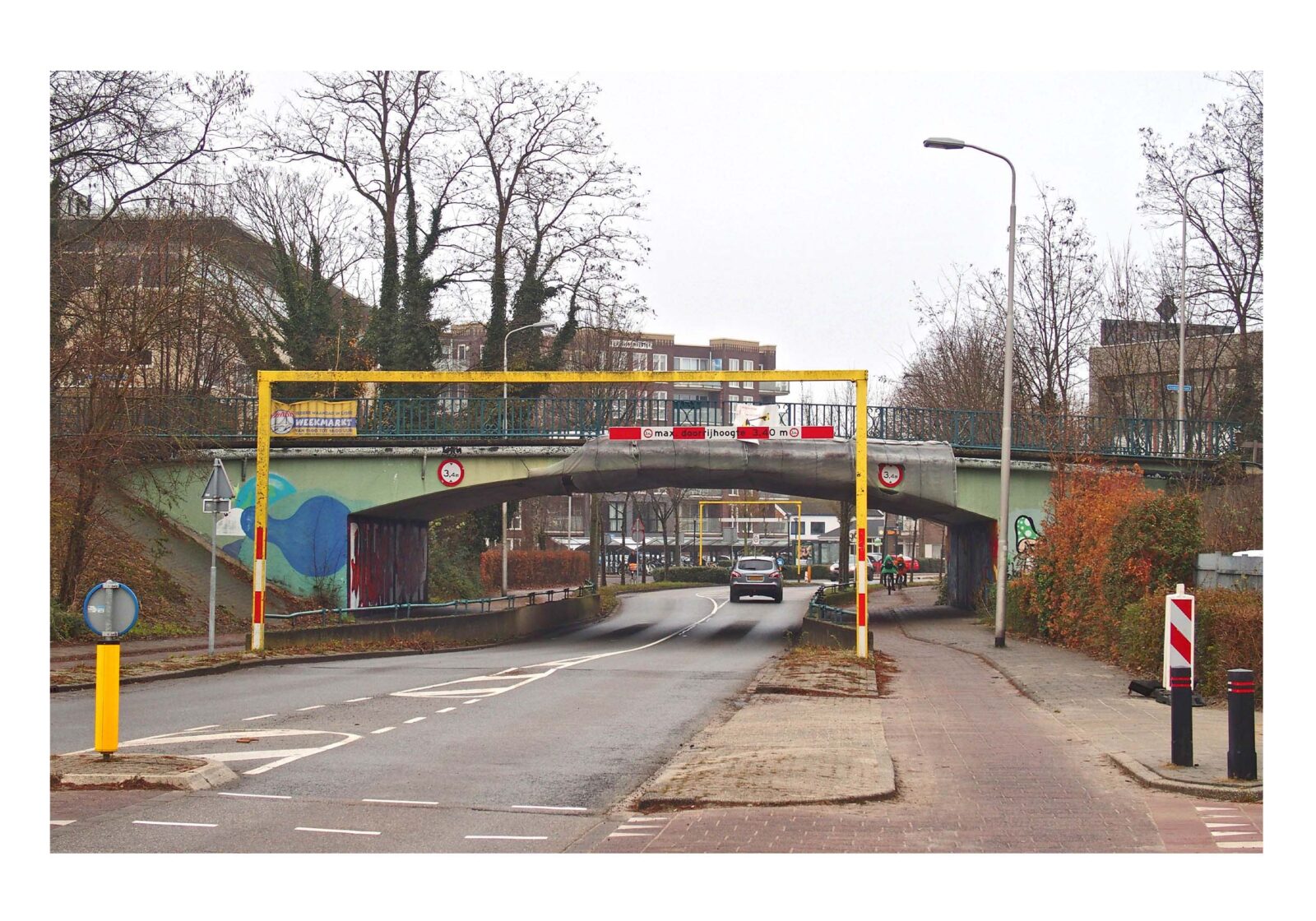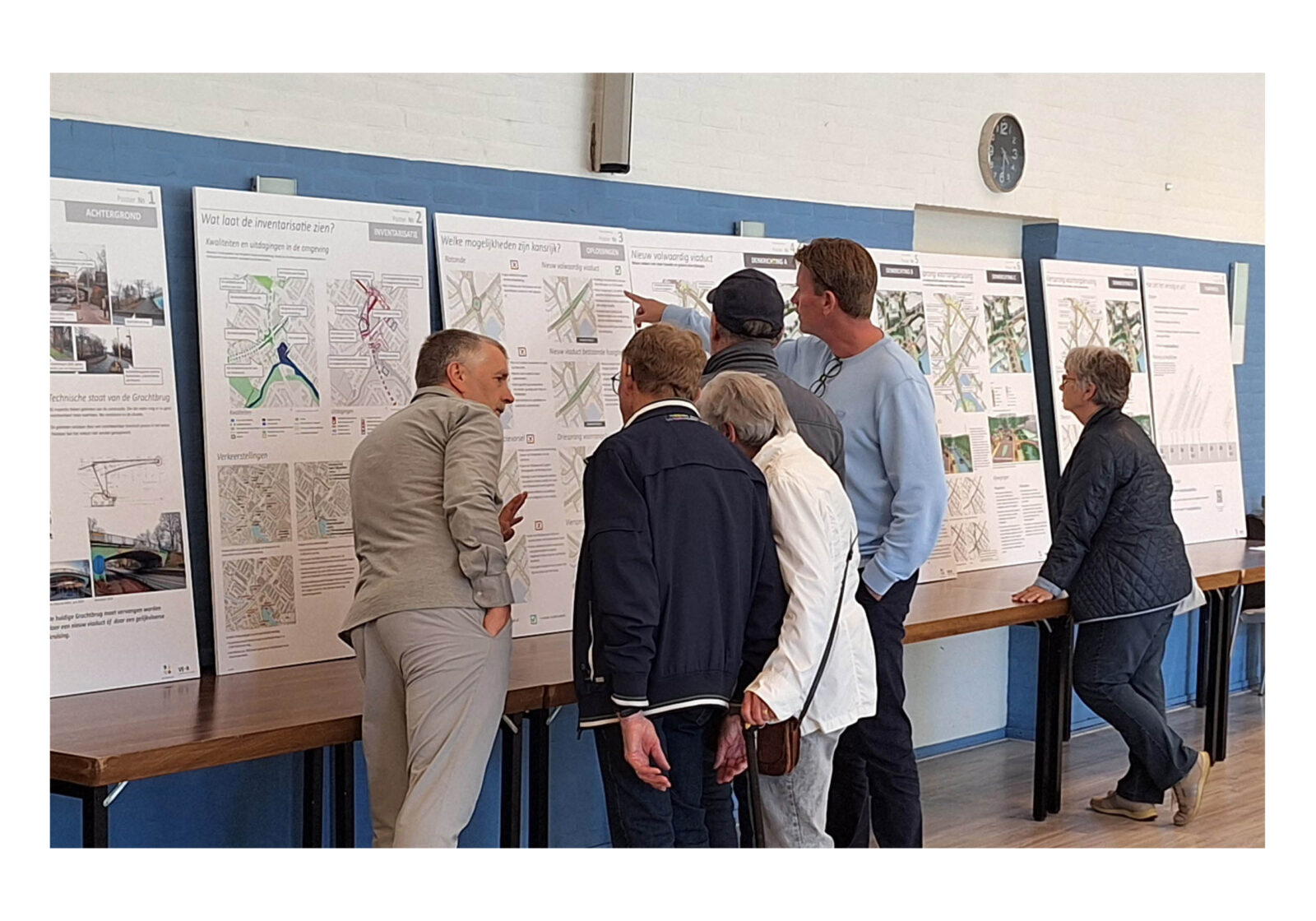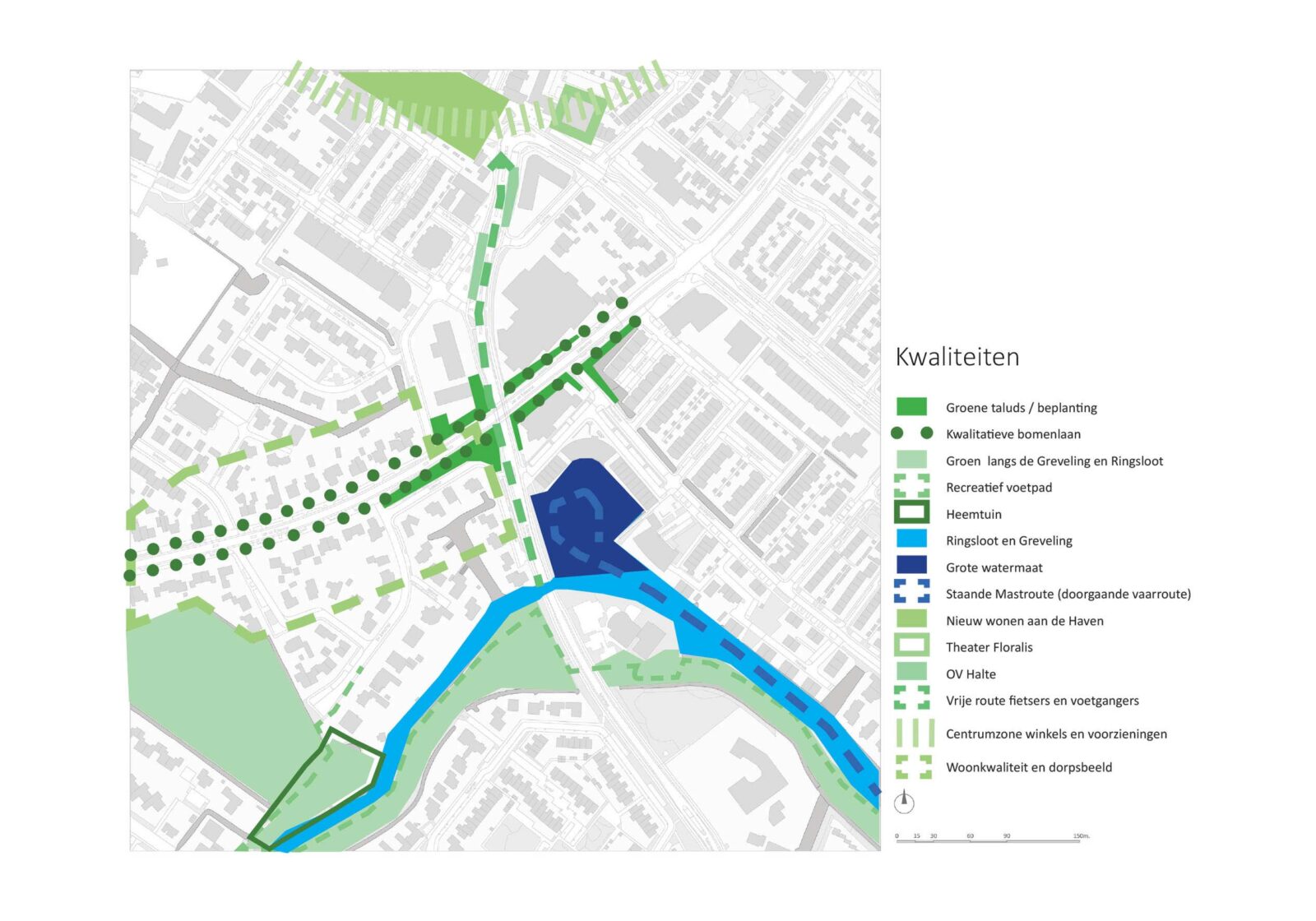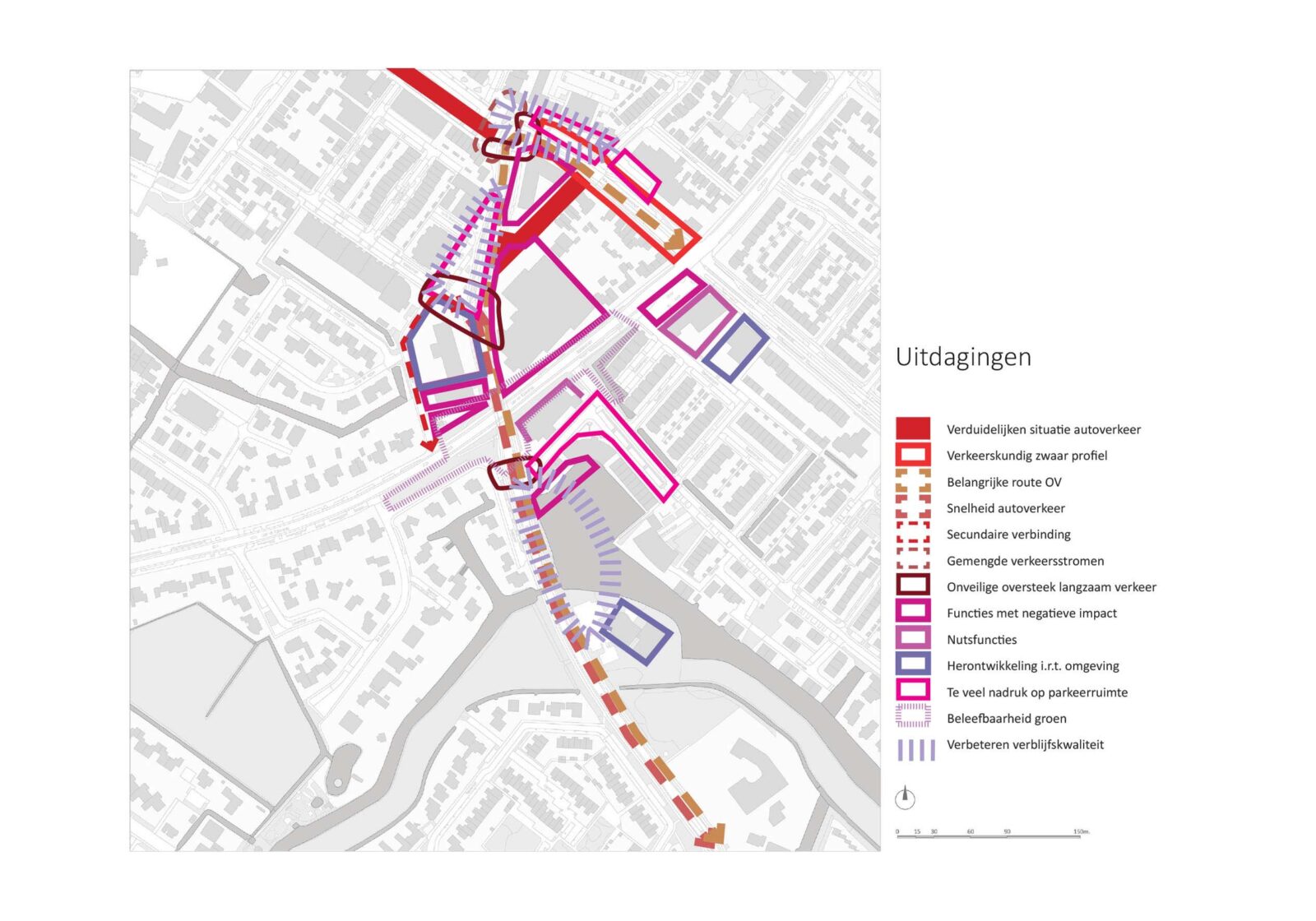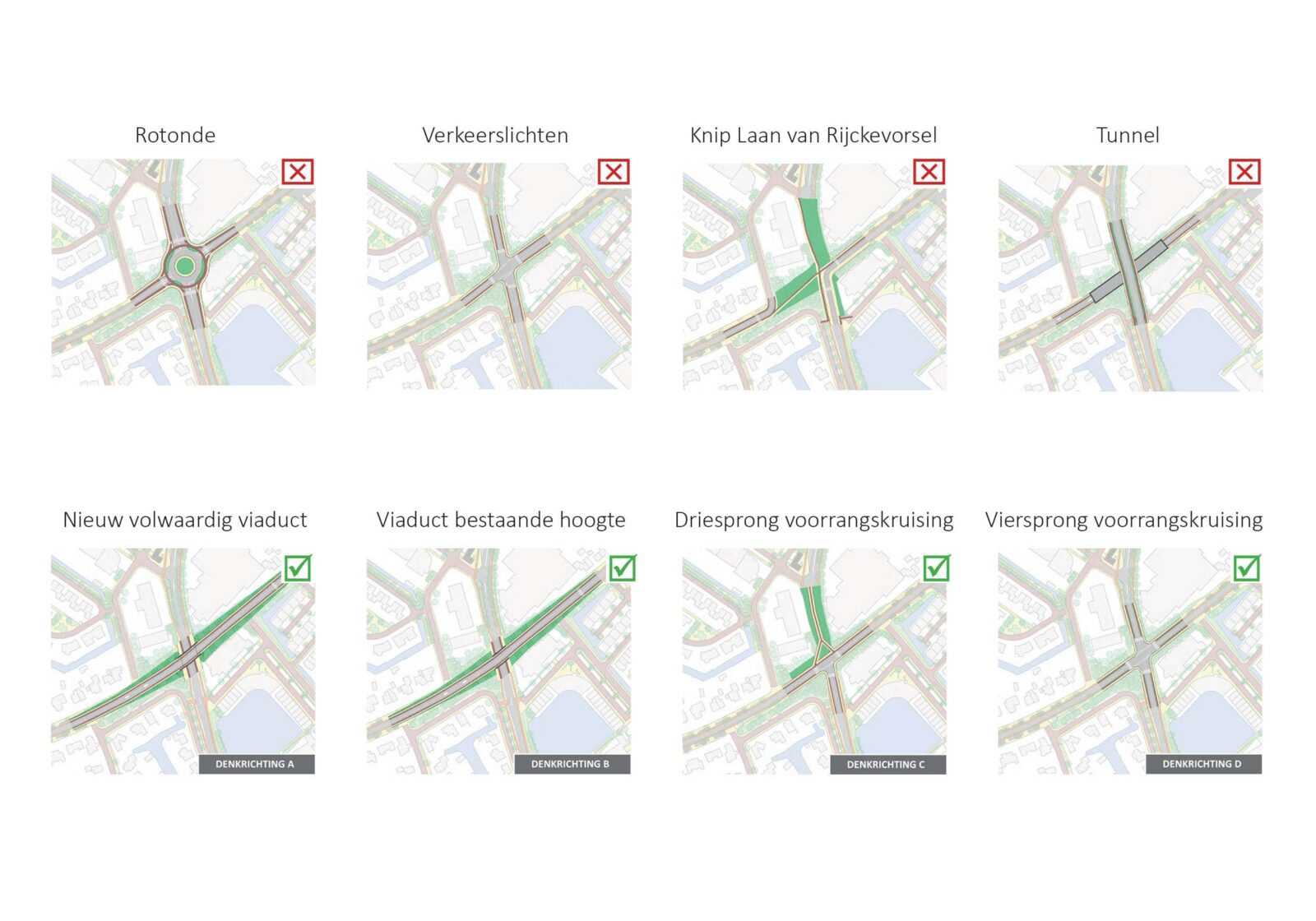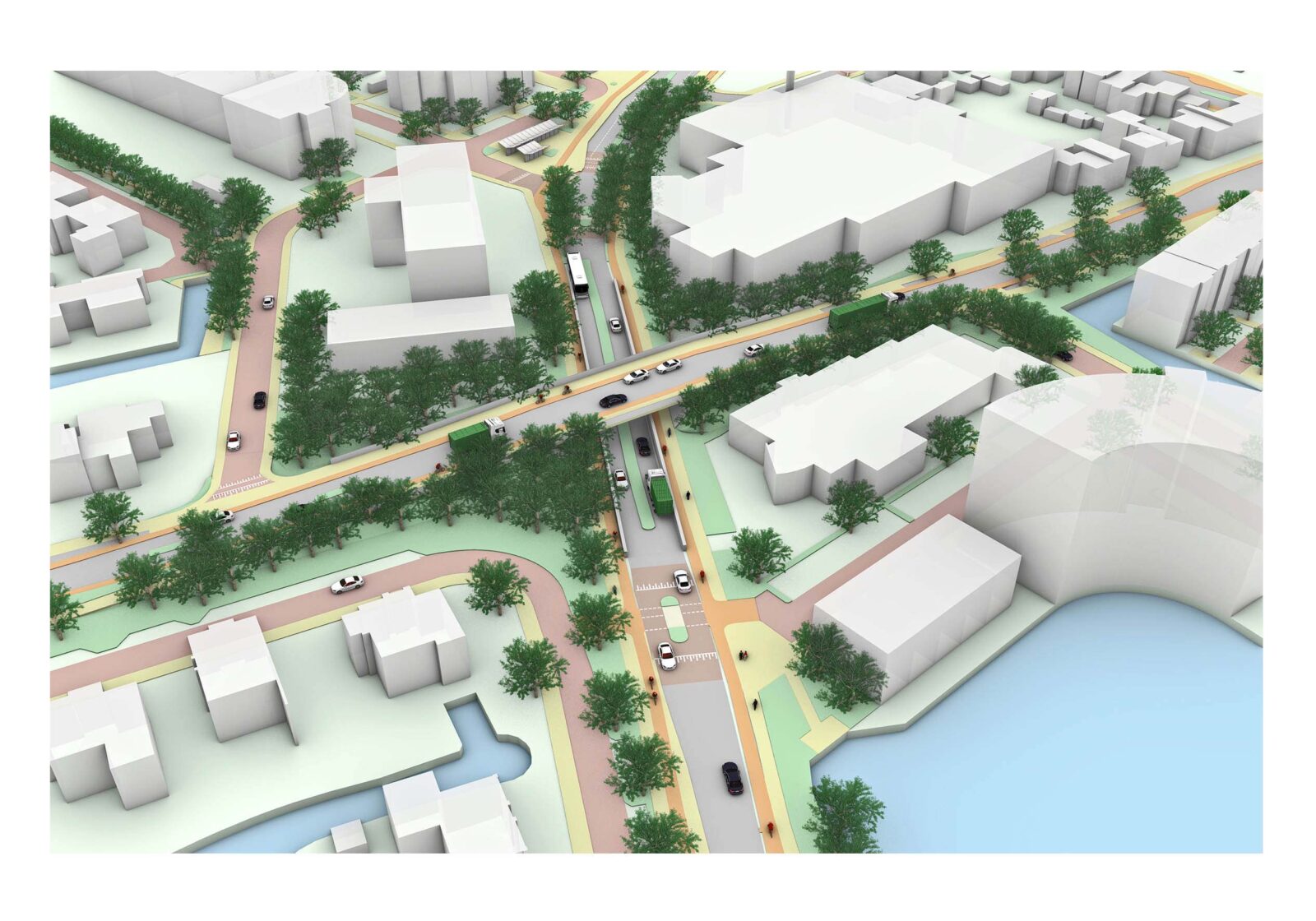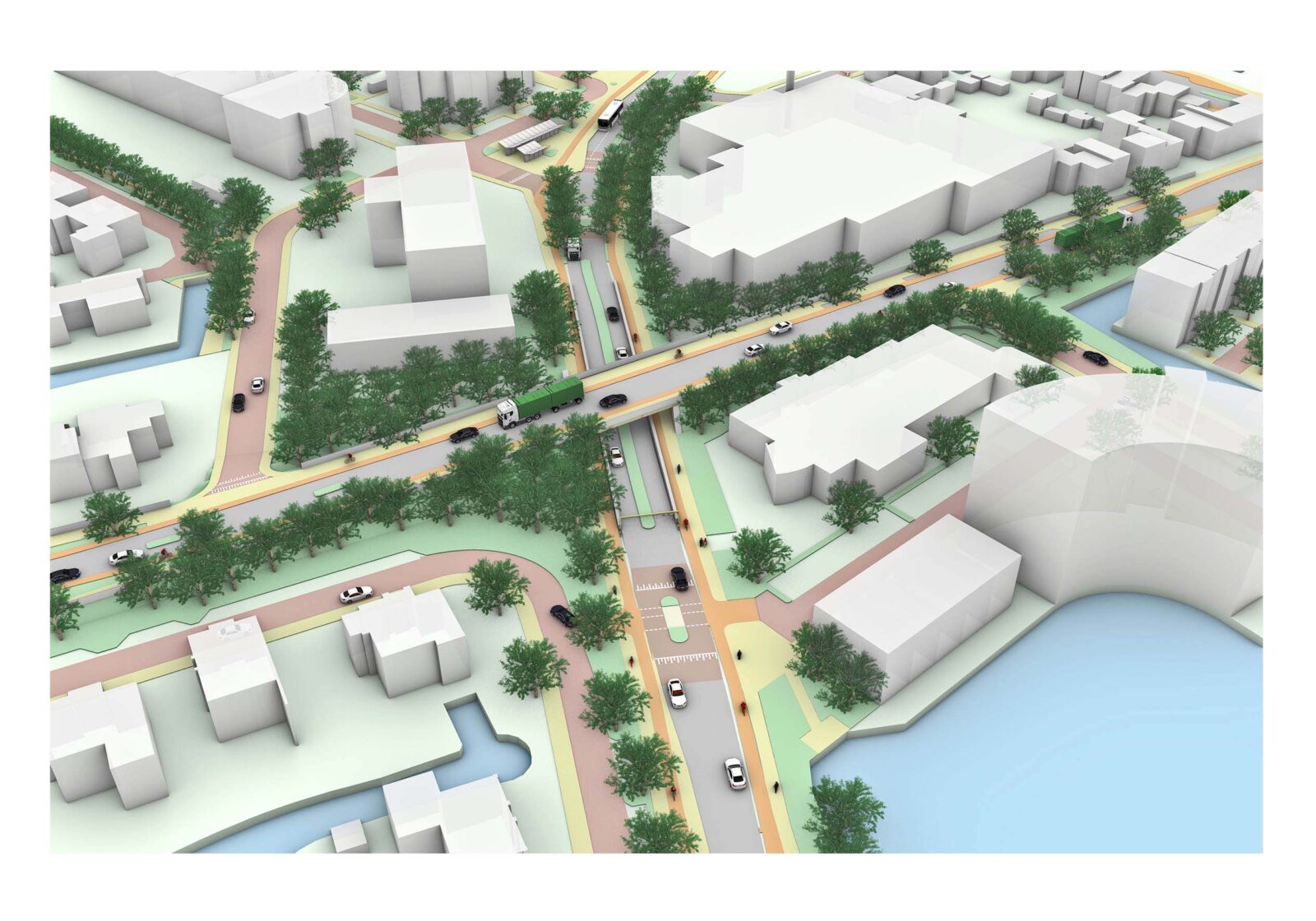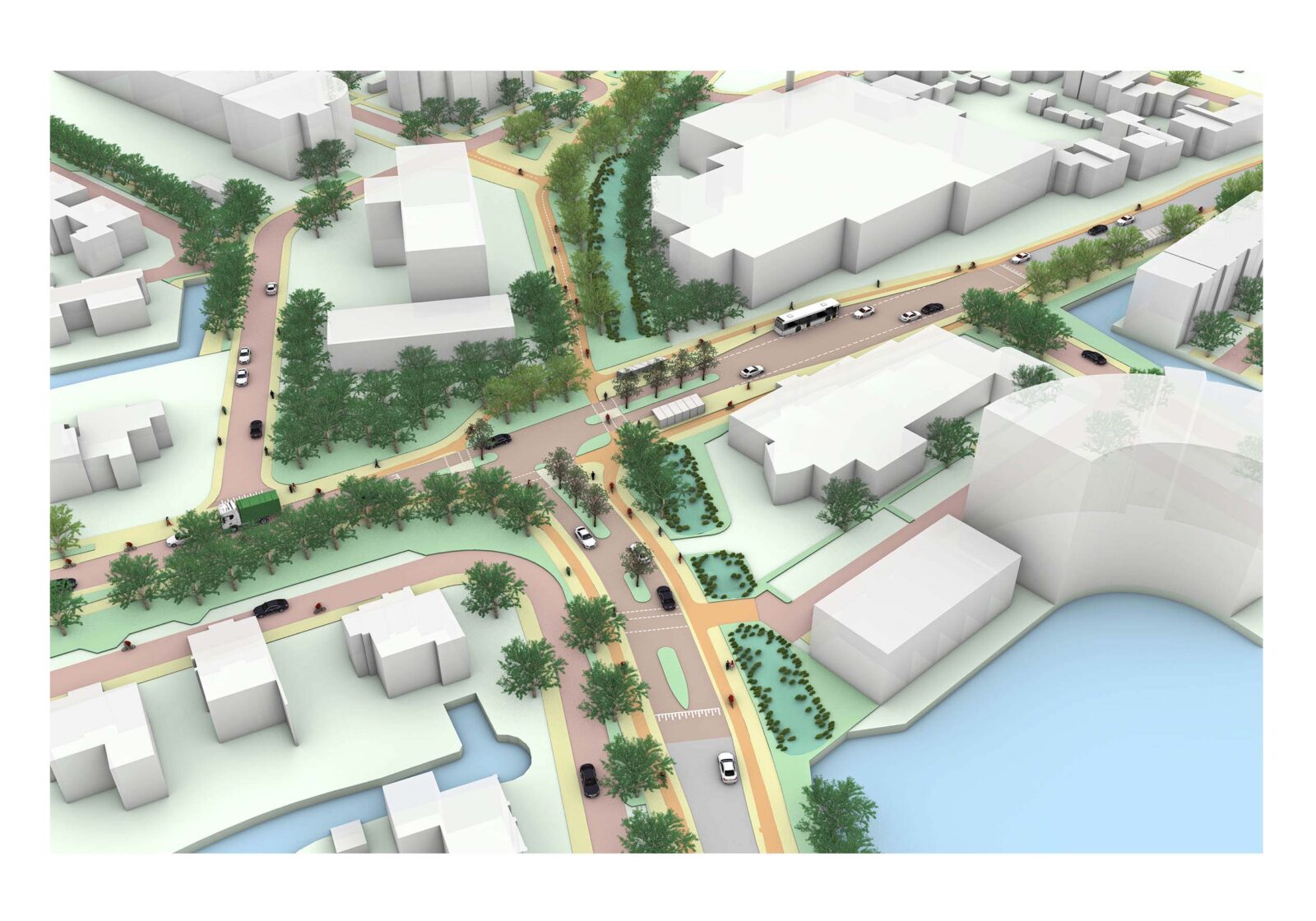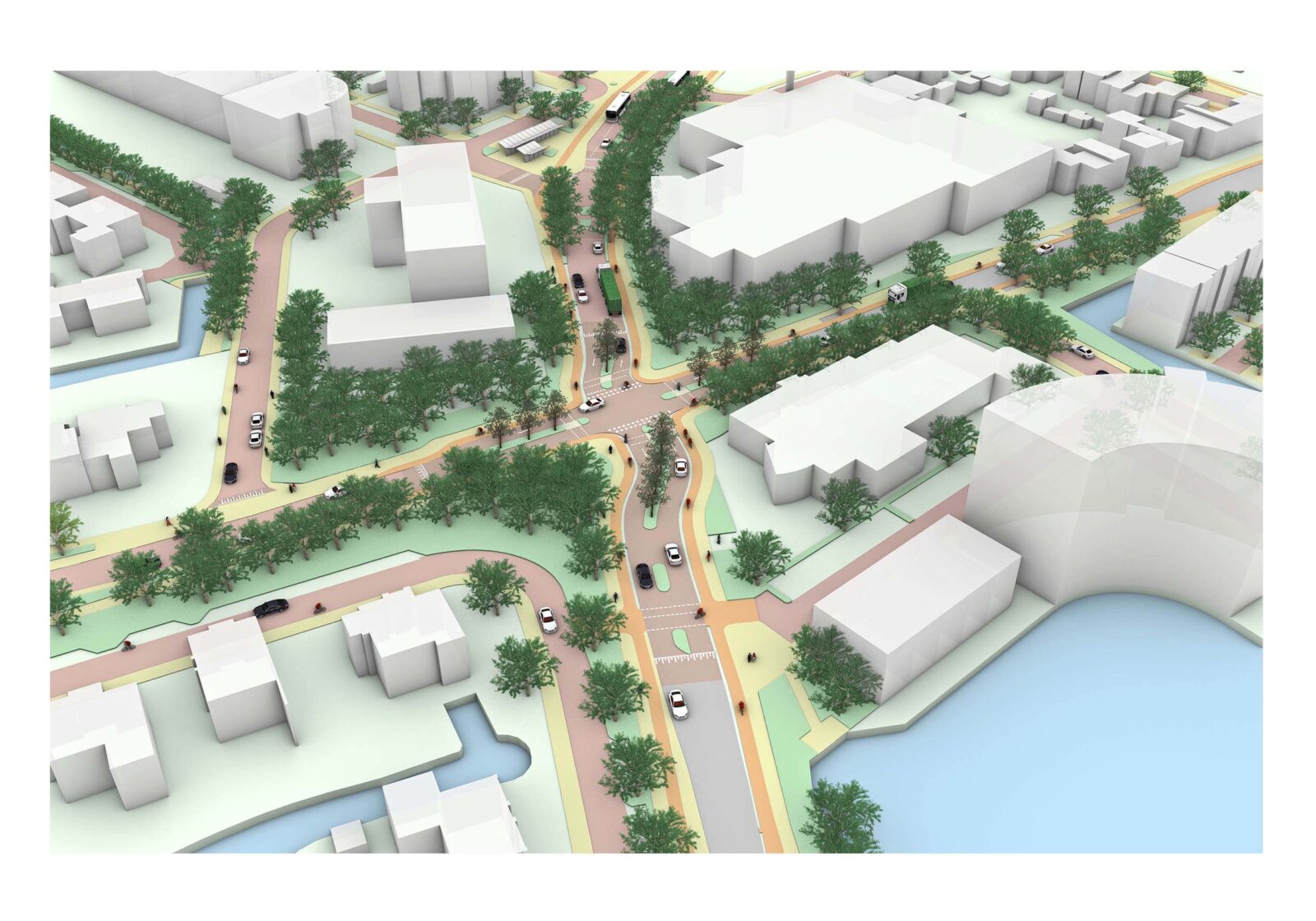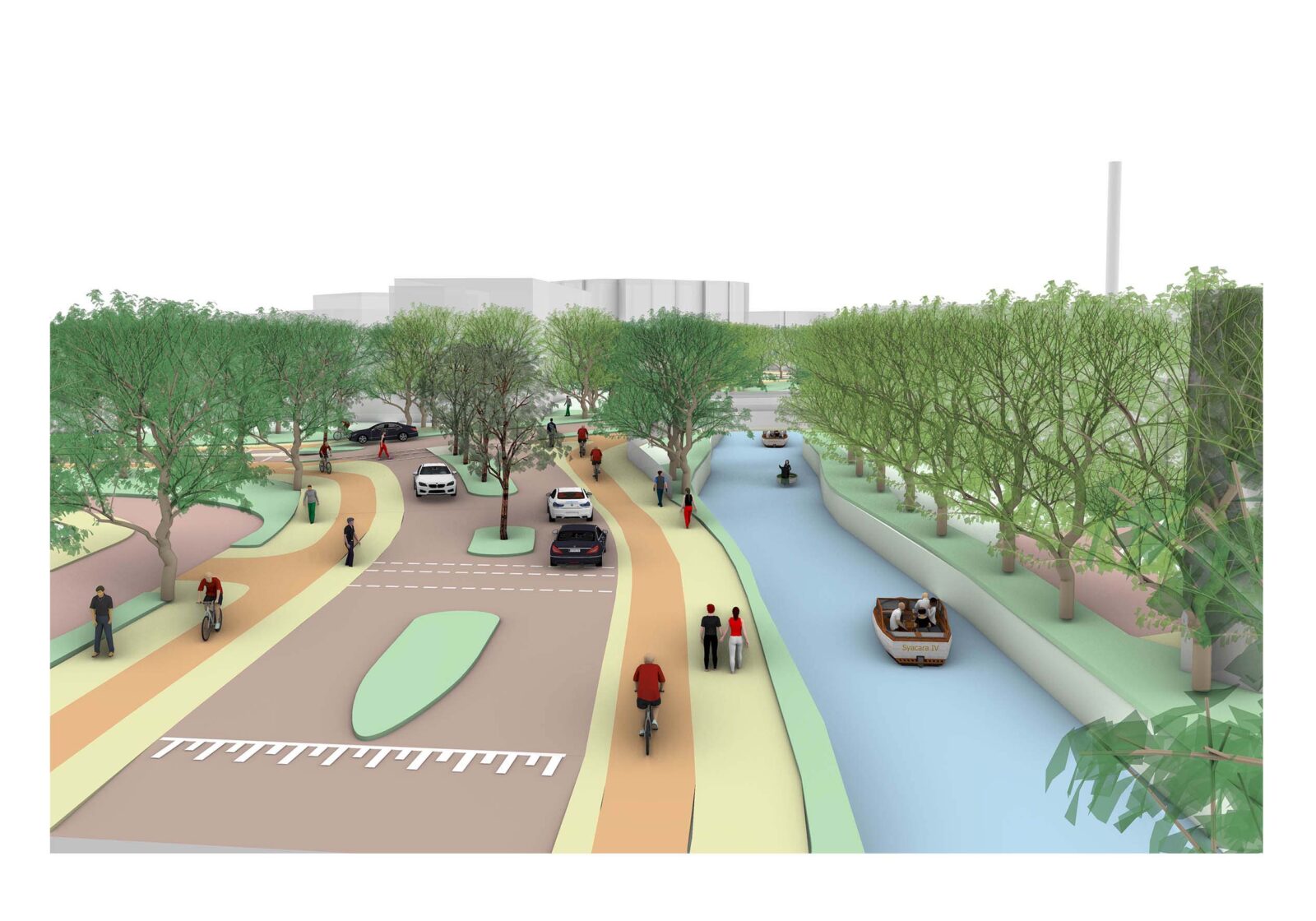Project Grachtbrug
Location
Lisse, The Netherlands
Project type
Traffic design strategy
Year
2023-2024
Client
Gemeente Lisse
Collaborators
-
Read more: https://www.lisse.nl/grachtbrug
Download panels here (text in dutch)
The viaduct of Laan Van Rijckevorsel was built in 1950 to facilitate through traffic in the town of Lisse over the current Ruishornlaan which used to be a cana that functioned as the main route of transportation of tulips and flower bulbs, for which Lisse is until today known. During recent checks the viaduct has been concluded to be a no longer durable stable construction. Therefore, freight traffic is no longer allowed on top of the bridge for now, and a process of replacement of the viaduct for either a new viaduct or another type of crossing should be studied.
Despite the obvious qualities of the area around the current Grachtbrug with abundant water and green, good connections with the city center for slow traffic coming from the Ruishornlaan, there are also some crucial challenges; these mainly involve lots of infrastructure with through-traffic roads, unsafe pedestrian and bike crossings and lack of accessibility due to the limiting height of 3.40m.
All these issues require an urgent and feasible solution that can be soon realized to overcome the construction issue of the current bridge, while at the same time enhance the current everyday life of residents and visitors.
The traffic flows indicate that currently the highest volume of vehicles crosses the Hyacinthenstraat and the Gladiolenstraat. If the viaduct is replaced by an intersection at the same level, the traffic flows will shift and the loop Ruishornlaan-Hyacinthenstraat will be less congested with more possibilities for a high quality, pedestrian-friendly area.
During this search of the optimal solution for the junction, we came up with a set of traffic tools (roundabouts, traffic lights, road ‘cut’, tunnel etc.) that we tested and tried together with traffic advisors, as well as through participatory sessions with the residents. After these sessions, we were able to narrow down to 4 preferred directions: (A) new heightened viaduct, (B) new viaduct at the same height, (C) T-junction, (D) full intersection. During the participation sessions it was advocated for the extra quality potential in direction C with more space for a pedestrian and bike-friendly, green public space between the crossing and the town centre. In the future this green space could even accommodate a renewal of the former water connection of the ‘gracht’.
The background of the current Grachtbrug and the need for a solution, together with all the options studied and the four most promising directions were presented to a wide audience in Lisse. During this information ‘market’ all stakeholders could learn from what the participation sessions had resulted in, see the pro’s and con’s of each four directions and form an opinion themselves which model would be the best direction going ahead into detailed design.

